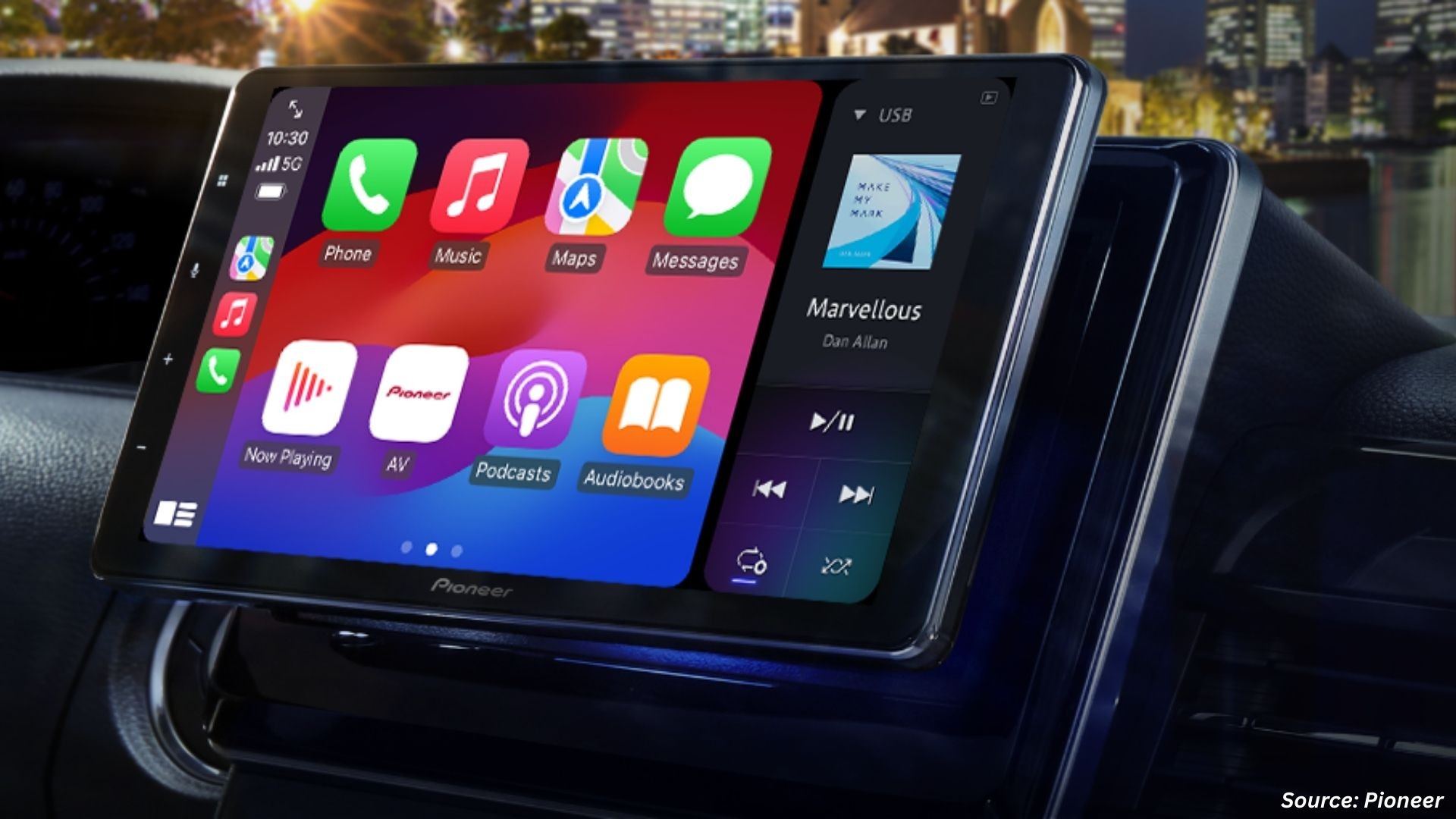
Automotive Electronics Market by Vehicle Type (Passenger Car, Light Commercial Vehicle, and Heavy Commercial Vehicle), by Component (Sensors, Actuators, Processors, Microcontrollers, and Others), by Application (ADAS, Infotainment & Communication System, Body Electronics, Safety System, Power Train, and Others), and by Distribution Channel (OEM and Aftermarket)- Global Opportunity Analysis and Industry Forecast 2022-2030
Market Definition
The Automotive Electronics Market was valued at USD 231.12 billion in 2021 and is predicted to reach USD 441.20 billion by 2030 with a CAGR of 7.7% from 2022-2030.
Automotive electronic components are being integrated into vehicles for enhancing the performance and efficiency of automotive vehicles and increasing safety. Both on- and off-road vehicles, including trucks, tractors, forklifts, excavators, motorbikes, and hybrid and electric automobiles, use automotive electronics. Electronic systems play a crucial role in the operation of many automotive components, including electronic fuel injection, engine management, ignition, radio, airbags, and entertainment systems.
Market Dynamics and Trends
The demand for automotive electronics market is increasing due to the proliferating adoption of IoT & AI in automobiles, vehicles equipped with automated driving, and the rising demand for advanced in-vehicle safety features. For instance, an electronic auto security lock increases security with remote-controlled locks and a central locking system, while the anti-lock braking system (ABS) stops cars from sliding downhill. Along with these features, automobile electronics also come with satellite-controlled traffic surveillance and engine health monitoring instruments.
Also, factors such as the increasing adoption of hybrid or electric vehicles to reduce pollution and lessen fuel consumption as well as the introduction of autonomous or driverless vehicles are further boosting the growth of the automotive electronics industry. Electric vehicles use various electronic components for diverse applications such as GPS, cameras, LiDAR, radar, and infotainment systems, which further augment the demand for automobile electronics.
Moreover, the increasing initiatives by governments and regulatory bodies toward emission control measures accelerate the adoption of electric vehicles, which in turn boosts the growth of the automotive electronics market.
The low adoption of automotive electronics in newly industrialized nations, as well as a rise in overall end-product cost owing to the integration of automotive electronics, may restrain the growth of the automotive electronics market. On the other hand, automotive manufacturers are making substantial capital investments in research and development activities to develop energy storage technology and high-performance electronics at a reasonable cost. This is expected to create ample growth opportunities for the market in the upcoming years.
Market Segmentation and Scope of Study
The global automotive electronics market is segmented on the basis of vehicle type, component, application, and distribution channel. Based on vehicle type, the market is classified into passenger car, light commercial vehicle, and heavy commercial vehicle. Based on the components, the market is segmented into sensors, actuators, processors, microcontrollers, and others. On the basis of application, the market is categorized into, ADAS infotainment & communication system, body electronics, safety system, power train, and others. Based on infotainment & communication the market is further subdivided into audio, display, navigation, head-up display, and communication. Based on powertrain the market is further subdivided into engine controllers, transmission drivetrain, exhaust, and xEV. On the basis of distribution channel, the market is divided into OEM and aftermarket. Geographical breakdown and analysis of each of the aforesaid classifications include regions comprising North America, Europe, Asia-Pacific, and RoW.
Geographical Analysis
Asia-Pacific dominated the global automotive electronics market in 2021 and is potently expected to remain dominant in the market throughout the forecast period. This is attributed to the manufacturing of vehicles in large numbers and the greater use of modern electronics by countries including China, South Korea, and Japan. Also, the rapidly growing automobile manufacturing industry in countries such as China and India is further boosting the automotive electronics market in the region.
According to International Energy Agency’s (IEA) May 2022 report, around 3.3 million units of cars including fully electric and plug-in hybrids were sold in China in 2021. Also, several government subsidies and funding activities to increase the sales of electric vehicles in the country are fueling the demand for automotive electronics industry in this region. For instance, in January 2021, the Environment Ministry of South Korea announced a subsidy budget of around USD 891.7 million for electric vehicles. According to this budget, the EV models with a price range below USD 53,000 will receive full subsidies. Such initiatives are expected to propel the production of electric vehicles in the region, thereby driving the automotive electronics market growth.
North America is projected to exhibit substantial growth in the global automotive electronics market during the forecast period, owing to the strict government laws surrounding car safety. Increased demand for safe, advanced, and electronically equipped components in the vehicle such as airbags, anti-lock braking systems, auto parking, and self-driving features is accelerating the growth of the North American automotive electronics market.
Also, the presence of key manufacturers in the region such as Aptiv PLC, ZF Friedrichshafen AG, and Denso Corporation among others is expected to fuel the market growth. In 2021, Aptiv launched Next-Gen of its existing ADAS Platform, which is developed especially for automated and electric vehicles. It reduces the complexity of the ADAS platform and is expected to lower the total system cost. Overall, the increasing focus on automotive safety and the growing demand for advanced electronics in vehicles are expected to drive the growth of the North American automotive electronics market.
Competitive Landscape
The automotive electronics market includes several market players such as Omron Corporation, Robert Bosch GmbH, Infineon Technologies AG, Hitachi, Ltd., Delta Electronics, Inc., ZF Friedrichshafen AG, Intel Corporation, Denso Corporation, Aptiv PLC, and Texas Instruments Inc. among others. These market players are adopting various strategies such as new product launches and collaboration to maintain their dominance in the global automotive electronics market.
For instance, in January 2022, Bosch partnered with IRP Systems, for the industrialization and mass production of IRP's personal mobility electric motor controllers. The main objective of this partnership is to deliver top-quality, powerful, and affordable controllers for a variety of personal mobility OEMs in Europe and across the world.
Also, in May 2022, Hitachi Energy launched RoadPak, a power semiconductor module for electric vehicles. This module is based on state-of-the-art silicon carbide (SiC) technology which provides exceptional levels of power for fast charging, vehicle reliability, and the longest possible driving range. Overall, the automotive electronics market is highly competitive, and companies are taking various measures to strengthen their position in the market.
Key Benefits
-
The automotive electronics market report provides a quantitative analysis of the current market and estimations through 2022-2030 that assist in identifying the prevailing market opportunities to capitalize on.
-
The study comprises a deep dive analysis of the automotive electronics market trend including the current and future trends for depicting the prevalent investment pockets in the market.
-
The information related to key drivers, restraints, and opportunities and their impact on the automotive electronics market is provided in the report.
-
The competitive analysis of the market players along with their market share in the automotive electronics market.
-
The SWOT analysis and Porter’s Five Forces model are elaborated in the study.
-
Value chain analysis in the market study provides a clear picture of the stakeholders’ roles.
Key Market Segments
By Vehicle Type
-
Passenger Car
-
Light Commercial Vehicle
-
Heavy Commercial Vehicle
By Component
-
Sensors
-
Actuators
-
Processors
-
Microcontrollers
-
Others
By Application
-
ADAS
-
Infotainment & Communication System
-
Audio
-
Display
-
Navigation
-
Head-Up Display
-
Communication
-
-
Body Electronics
-
Safety System
-
Power Train
-
Engine Controllers
-
Transmission Drivetrain
-
Exhaust
-
xEV
-
-
Others
By Distribution Channel
-
OEM
-
Aftermarket
By Geography
-
North America
-
U.S.
-
Canada
-
Mexico
-
-
Europe
-
UK
-
Italy
-
Germany
-
Spain
-
Netherlands
-
Rest of Europe
-
-
Asia-Pacific
-
China
-
Japan
-
India
-
Australia
-
South Korea
-
Taiwan
-
Vietnam
-
Rest of Asia Pacific
-
-
RoW
-
Latin America
-
Middle East
-
Africa
-
Key Market Players
-
Omron Corporation
-
Robert Bosch GmbH
-
Infineon Technologies AG
-
Hitachi, Ltd.
-
Delta Electronics, Inc.
-
ZF Friedrichshafen AG
-
Intel Corporation
-
Denso Corporation
-
Aptiv PLC
-
Texas Instruments Incorporated
REPORT SCOPE AND SEGMENTATION:
|
Parameters |
Details |
|
Analysis Period |
2021–2030 |
|
Base Year Considered |
2021 |
|
Forecast Period |
2022–2030 |
|
Market Size Estimation |
Billion (USD) |
|
Market Segmentation |
By Vehicle Type (Passenger Car, Light Commercial Vehicle, Heavy Commercial Vehicle) By Component (Sensors, Actuators, Processors, Microcontrollers, Others) By Application (ADAS, Infotainment & Communication System, Body Electronics, Safety System, Power Train, Others) By Distribution Channel (OEM and Aftermarket) |
|
Geographical Segmentation |
North America (U.S., Canada, Mexico) Europe (Germany, UK, Spain, Italy, Netherlands, Rest of Europe), Asia-Pacific (Australia, China, India, Japan, South Korea, Vietnam, Taiwan, Rest of Asia-Pacific), Rest of the World (Latin America, Middle East, Africa) |
|
Companies Profiled |
Omron Corporation, Robert Bosch GmbH, Infineon Technologies AG, Hitachi, Ltd., Delta Electronics, Inc., ZF Friedrichshafen AG, Intel Corporation, Denso Corporation, Aptiv PLC, and Texas Instruments Inc. among others |




















 Speak to Our Analyst
Speak to Our Analyst

























